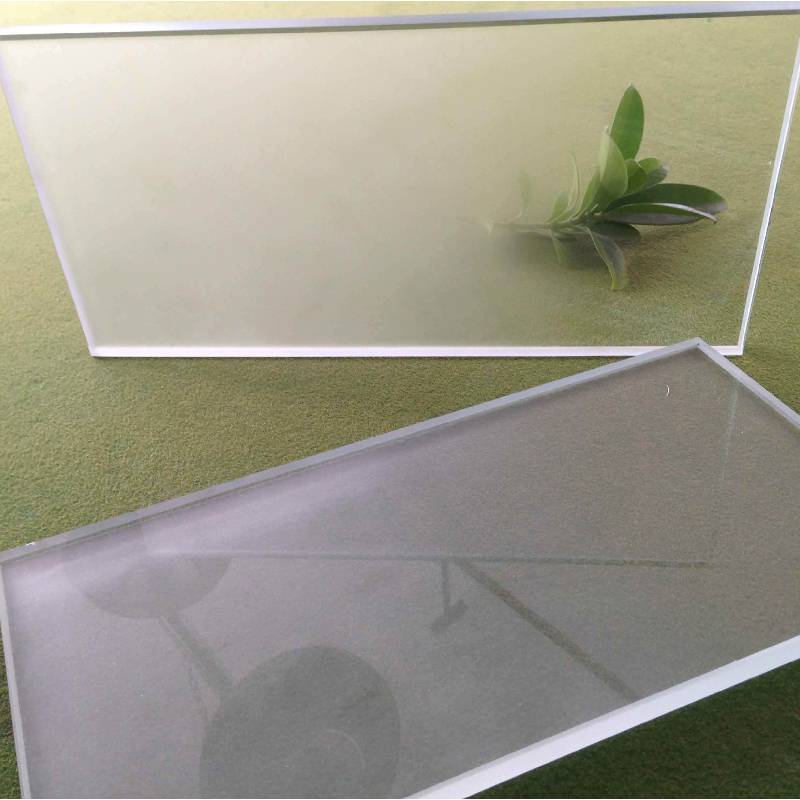

Understanding Single Glazed Low-E Glass A Comprehensive Overview
In the realm of modern architecture and energy-efficient design, materials play a pivotal role in maximizing energy performance while maintaining aesthetics and functionality. One significant innovation in this field is Single Glazed Low-E (Low Emissivity) Glass. This article delves into the characteristics, benefits, applications, and considerations of using Single Glazed Low-E Glass in construction.
What is Single Glazed Low-E Glass?
Single glazed glass refers to a single layer of glass pane, as opposed to double or triple glazing, which contains multiple layers. Low-E glass, on the other hand, is coated with a thin layer of metallic oxides that reflect infrared radiation while allowing visible light to pass through. This particular coating helps in regulating heat transfer, making Low-E glass an excellent choice for both residential and commercial applications.
The Thermal Performance Benefits
One of the most compelling features of Single Glazed Low-E Glass is its remarkable thermal performance. The Low-E coating reflects heat back into the space, reducing the amount of heat lost during colder months. Conversely, in warmer weather, it reflects heat away from the building, thereby minimizing solar heat gain. This dual function makes Single Glazed Low-E Glass an energy-efficient alternative, as it can significantly lower heating and cooling costs.
Moreover, due to the enhanced insulation properties, buildings featuring Single Glazed Low-E Glass may qualify for energy performance certifications, which can enhance property value and appeal to energy-conscious buyers
.Aesthetic Considerations
While energy efficiency is a primary factor, aesthetics cannot be overlooked. Single Glazed Low-E Glass is available in various finishes and tints, giving architects and designers the flexibility to create visually appealing structures. It allows natural light infiltration, which can enhance indoor spaces, providing a bright, welcoming atmosphere.
Additionally, the clear view through Low-E glass is comparable to standard single-glazing, maintaining the elegant appearance of windows without noticeable distortion or altering the visual perception from inside or outside the building.

Applications in Construction
Single Glazed Low-E Glass finds its applications in multiple contexts, including residential homes, office buildings, and educational institutions. Its effectiveness in controlling temperature makes it suitable for geographic regions with extreme weather conditions.
The glass is often used for windows, skylights, and glass doors, allowing expansive views while keeping energy costs down. It is invaluable in locations with stringent energy codes or green building programs, as it contributes to achieving sustainability goals.
Considerations and Limitations
Despite its advantages, Single Glazed Low-E Glass does have limitations. One significant aspect is insulation performance. While it outperforms standard single glazing, it does not match the thermal efficiency of double or triple-glazed units, which can be more suitable for extremely cold climates or passive house designs.
Moreover, single glazing can be more susceptible to thermal stress, leading to the risk of cracking. Proper installation and an understanding of the glass' limitations in varied climates are essential to mitigate these risks.
Conclusion
In summary, Single Glazed Low-E Glass represents a significant advancement in building materials technology, combining energy efficiency with aesthetic appeal. When used appropriately, it can contribute to lower energy consumption, improved thermal comfort, and enhanced property value.
As architects and developers increasingly prioritize sustainability in their projects, Single Glazed Low-E Glass stands out as an effective solution for modern building design. Its benefits and versatility make it a sensible choice for those looking to create spaces that are not only beautiful but also environmentally responsible. The continued evolution of glass technology promises even greater advancements, paving the way for more efficient and innovative building designs in the future. Whether for residential remodeling or new commercial developments, Single Glazed Low-E Glass is certainly a material worth considering.